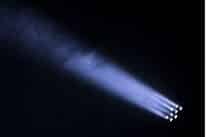 The notion of beam has multiple uses. The first meaning that the Royal Spanish Academy ( RAE ) includes in its dictionary refers to the bundling of stems, firewood, ears or similar elements .
The notion of beam has multiple uses. The first meaning that the Royal Spanish Academy ( RAE ) includes in its dictionary refers to the bundling of stems, firewood, ears or similar elements .
Continuing in the context of botany , the upper face of a leaf is called the bundle. The upper surface is usually smoother and shiny than the underside (the underside). The face of a fabric or the face of any other element that is more valuable to the touch or sight is also called a beam.
For anatomy , a bundle is a group of nerve or muscle fibers . These fibers are grouped in parallel, as in the case of the bundle of His.
The bundle of His is the atrioventricular fasciculus , a formation located within the heart that is made up of a thin muscular cord with a length of approximately 1 centimeter. It is located in the conduction system, which helps the ventricles perceive the excitation of the atria.
It is possible to distinguish two parts of the bundle of His: an inframembranous segment , which extends along the membranous portion along the perimeter of its posteroinferior quadrant; the short segment (or perforator ), whose extension does not exceed 5 millimeters and cuts the fibrous trigone.
The origin of the His bundle is located in the node of Tawara , also known as the atrioventricular node , Aschoff-Tawara node , or atrioventricular node . It is a set of cardiac cells located in the right atrium that specialize in forming and conducting electrical impulses from the heart.
Starting from the node of Tawara, the bundle of His passes through the inferior surface of the interatrial septum. One of the diseases related to this part of the body is known as bundle branch block , precisely because the electrical impulse that should propagate through the organ finds a blockage in the bundle branches.
 There is a "natural pacemaker" in the heart, called the sinus node, a set of cells found in the right atrium that specialize in sending electrical impulses many times per minute to stimulate contraction (what we perceive as the " beat"). The impulse passes first through the upper cavities and then through the node of Tawara, which stops it and transfers it to the bundle of His, where the blockage can take place.
There is a "natural pacemaker" in the heart, called the sinus node, a set of cells found in the right atrium that specialize in sending electrical impulses many times per minute to stimulate contraction (what we perceive as the " beat"). The impulse passes first through the upper cavities and then through the node of Tawara, which stops it and transfers it to the bundle of His, where the blockage can take place.
For the two ventricles to contract simultaneously, it is necessary for the electrical impulse to propagate through the right and left branches at the same speed. If one of them does not work normally, the impulse must go through another route. This slows it down and causes one of the ventricles to take a fraction of a second longer than the other to contract. Among the possible causes are cardiomyopathies, valvular diseases and coronary arteries.
Beam, on the other hand, is a set of rays or particles that have the same origin. A beam of light, in this sense, is electromagnetic radiation that starts from a common point.
Geometry , meanwhile, appeals to the idea of a beam to refer to the planes that meet in a certain line or to the lines that cross the same point.
Finally, it should be noted that haz is a conjugation of the verb do , corresponding to the imperative form of the second person singular. For example: “Do what you want, but don't come to bother me” , “I'll tell you in a simple and direct way: do what I tell you if you don't want to have problems” , “Son, if you want to get my permission to go to the game, do your homework first and then we'll talk.”
